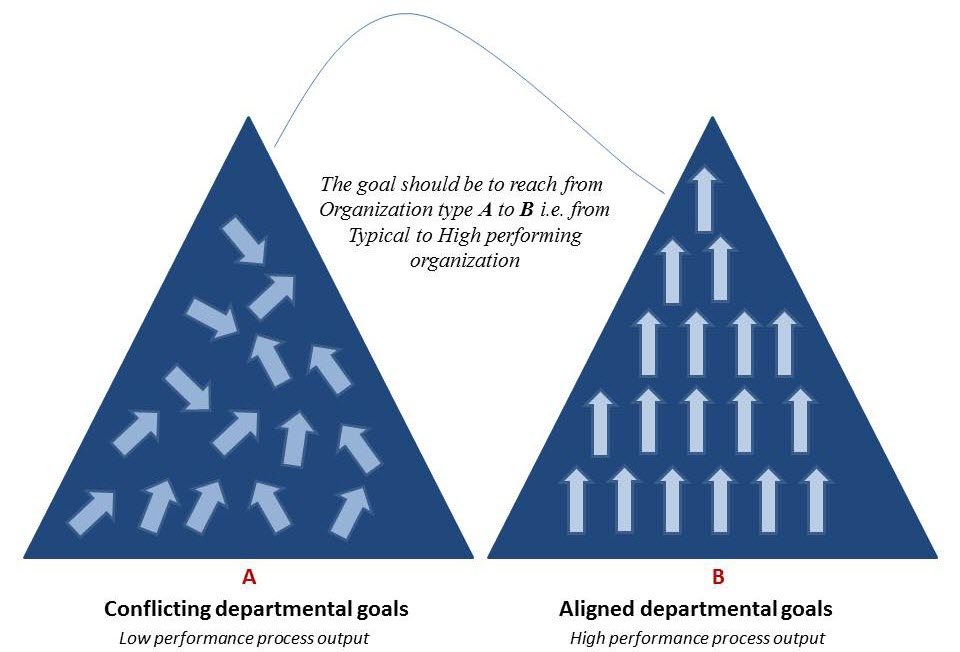Hoshin can be well-defined as ‘the direction of a needle’ more like a compass while Kanri can be defined as ‘controlled reasoning or controlled logic’. In short words, Hoshin means ‘direction’ while Kanri means ‘administration’ and when used together, they ask the question “How can we make sure to go in the right path?” or “How can we control our direction?”
Hoshin Kanri is a very important Lean management technique to make sure that a company’s processes get accomplished across the hierarchy.
The Hoshin Kanri tool is mainly used for policy deployment and strategic planning. Hoshin Kanri tool is a Japanese tool which has been made use of since the 1960s. This tool develops a unifying and vivid strategic plan which emphasizes on the fundamentals while also creating opportunities for major innovations.
Why Make Use of the Hoshin Kanri Tools
The Hoshin Kanri tools are used;
- To develop a strategic plan to be implemented by any group or organization.
- To manage the activities that sustains and promotes the group or organization’s mission and vision.
- To help the organization set a long term vision.
- To show the links between the short term activities and the long term vision.
- To identify the initiatives or projects that should be executed first.
How to Use the Hoshin Kanri Tools
Step 1 – Define Whatever You Would like to Improve
This is usually a major strategic goal which needs an important modification on how processes are being carried out.
Step 2 – Establishment of the Sub-Goals in Order to Achieve Your Goals
The Hoshin Kanri tools involve asking the following questions;
- What functional, team, departmental or organizational objectives for the year have to be achieved?
- What are the necessary checkpoints in order to stay on track?
- What controls can be put in place to make sure that the objectives are successfully achieved?
- How will progress and success be measured and evaluated?
Answer to every of these questions should be given and recorded to be used as basis for the review process.
Step 3 – Communicate the Plan
The third step to using the Hoshin Kanri tools is to communicate your strategy to every concerned staff of the organization. While doing this;
- Make sure every level in the organization comprehends your mission and vision.
- Have all the teams and departments in the organization set their own objectives and link them to the sub-goals that you have established.
- Ensure that every of the team and department manager breaks down the goals so as to enable everyone understands their responsibility in the plan and also makes use of the Hoshin Kanri tools to manage those who report to them.
- Make sure to assign duties for every item in the execution plan.
- Ensure to have agreement on every item to be used in the execution with all your reports and ensure that the agreement has also been rippled down.
Step 4 – Develop a Structure to Gather Information on the Control Parameters, and Now Use the Information to Manage Change
Are your main metrics being achieved? If not, then why?
With the aid of the Hoshin Kanri tools, make a review table to shows the following;
- Metrics of performance
- Goal owners
- Goals
- Targets
- Genuine results
- Time frame
This table should then be used to manage the movement towards these objectives on a continuous basis. This step helps to make sure that your documented plan is being put to work. The use of the Hoshin Kanri tools is founded on the idea that in order to attain the strategic goals, the organization has to be in a consistent state of evaluation and reflection.
Step 5 – Examine Outcomes, and Take Corrective Actions When and Where Needed
If the actual results differ in any way from the expected results, identify the root of the differences. Discuss the differences, arrange a corrective action and then execute this action.
With the aid if Hoshin Kanri tools, the following questions below should be given the proper answers;
- What is going wrong and what is going right?
- Do the plans match the realities of the organization and the problems being faced?
- Are the countermeasures appropriate?
- What could be done differently to achieve success?
This stage ensures continuous improvement in order to continue pushing the organization towards its vision.
Step 6 – Repeat the Steps as Needed
These steps can be repeated as many times as possible to improve the value of effort. The Hoshin Kanri tools can be made use of within numerous business functions and units to make sure that their strategies are aligned to their goals and continuous improvement is desired.






